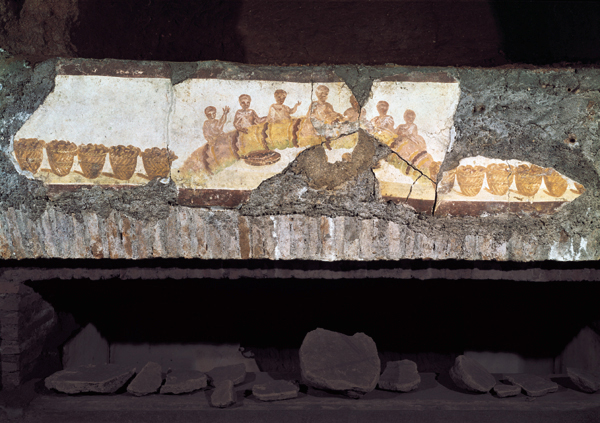Image Details

Scala/Art Resource, NY
Seven young men are pictured enjoying a lively repast in frescoes from burial chambers in the Catacomb of Callistus, in Rome (one of which is shown here). Named for the early-third-century pope who sanctioned the underground cemetery, the catacomb contains some of the earliest known Christian art, including several similar paintings of banquets.
A cursory glance might lead modern Christians to identify these scenes as representations of the Eucharist. But why are the participants being served fish? And why, in the painting shown here, are there so many baskets of bread flanking their table? If the scenes are meant to be depictions of the Last Supper, why are seven people at the table instead of 13? Could they illustrate the heavenly feast mourners believed awaited the deceased? Or one of Jesus’ post-resurrection meals? Author Robin Jensen turns to funerary practices, New Testament stories, Christian symbolism and Roman art to excavate the multi-layered meaning of one of the most common and earliest images in Christian funerary art.
